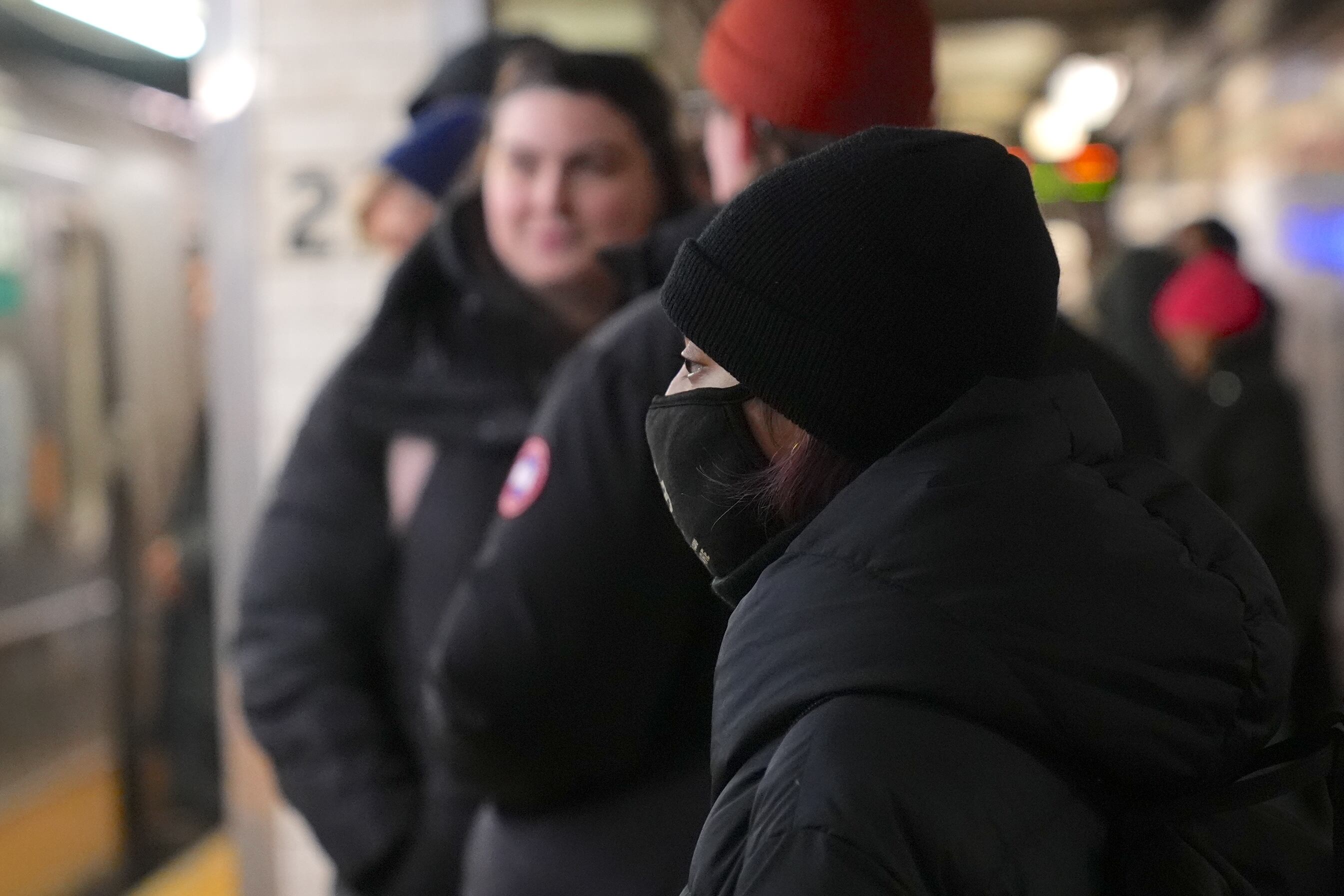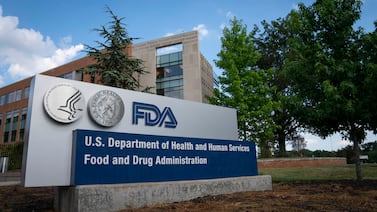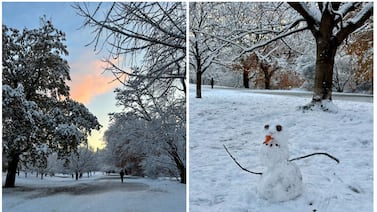Sign up for Your Local Epidemiologist New York and get Dr. Marisa Donnelly’s community public health forecast in your inbox a day early.
Have questions, comments, or ideas for future topics? Email YLE NY at mdonnelly@healthbeat.org. I would love to hear from you.

Does it feel like everyone around you is sick right now? Yeah, me too. It seems like half my friends and family have the sniffles, and I’m still recovering from a respiratory infection. Our New York communities are in peak respiratory season. Let’s dive into the most recent respiratory data following the holidays, plus a bit on norovirus. Here’s your State of Affairs.
The flu: High and increasing
The number of people with flu in New York is high — hospitalizations in the state increased by 44% during the week ending Jan. 4, compared to the prior week. Increases are widespread across all regions of the state.
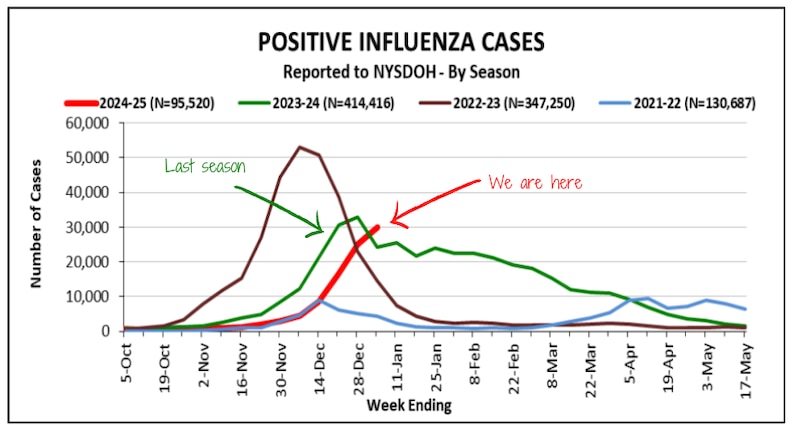
In an earlier post, I mentioned that flu activity started later this year compared to last year and shared some guesses as to what that could mean for flu intensity this year.
At this point, the flu season is shaping up to be similar to pre-pandemic times. Flu activity hasn’t peaked yet (unlike last year when it peaked the last week of December). The question is, will the number of severe infections be similar to last year, or worse?
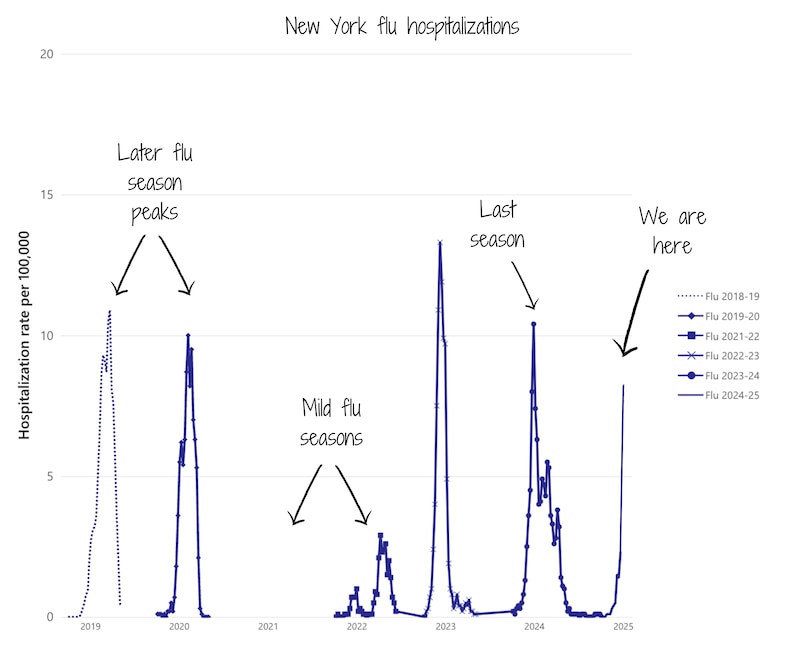
Only time will tell, but in the meantime, it’s a good idea to take protective measures against the flu, like wearing a mask in crowded spaces (while traveling, on the subway, in supermarkets, etc.) and avoiding social interactions if you aren’t feeling well. Flu usually has a second peak later in winter due to flu B circulation (right now, most flu cases are from flu A), and infections can go into March or April, so it’s not too late to get your flu vaccine at a local pharmacy or clinic.
Covid-19: Minimal and increasing
Covid-19 activity in New York this season has been surprisingly low, with levels inching up more slowly compared to last season. This is our mildest winter for Covid-19 since the start of the pandemic. This is likely because we had such a big Covid-19 wave late last summer, resulting in a lot of immunity. I expect Covid-19 activity to continue increasing in New York, as national and regional Covid-19 levels are high and continue to increase.
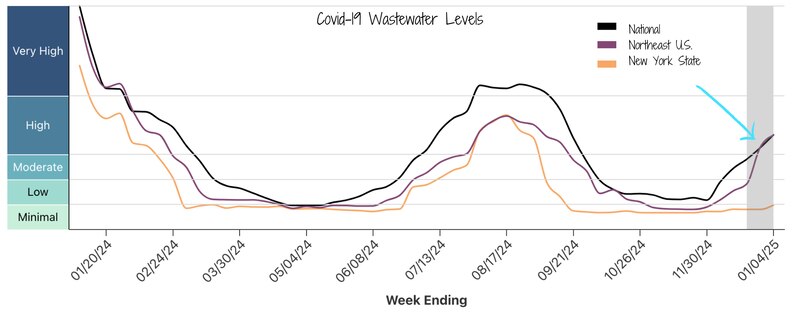
Covid-19 continues to increase in New York City, where wastewater levels are increasing.
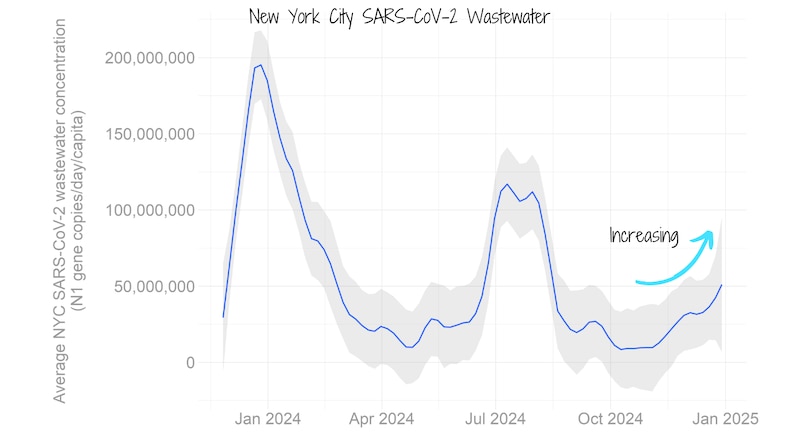
RSV: High but decreasing
RSV has peaked and is now declining in New York. This season’s peak happened about two weeks later than last year, but it was largely a middle-of-the-road season (so far there have been a similar number of cases compared to last year).
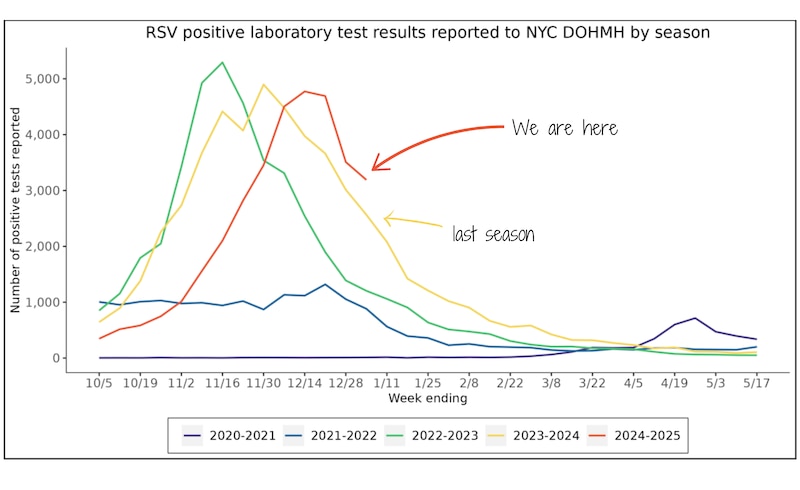
RSV infections in kids, who are usually hit hardest, have been similar this season to pre-pandemic levels. We hoped that RSV vaccines would have a stronger effect this year in keeping kids out of hospitals. I’ll be looking for more data on how RSV vaccines affected hospitalizations after the season ends.
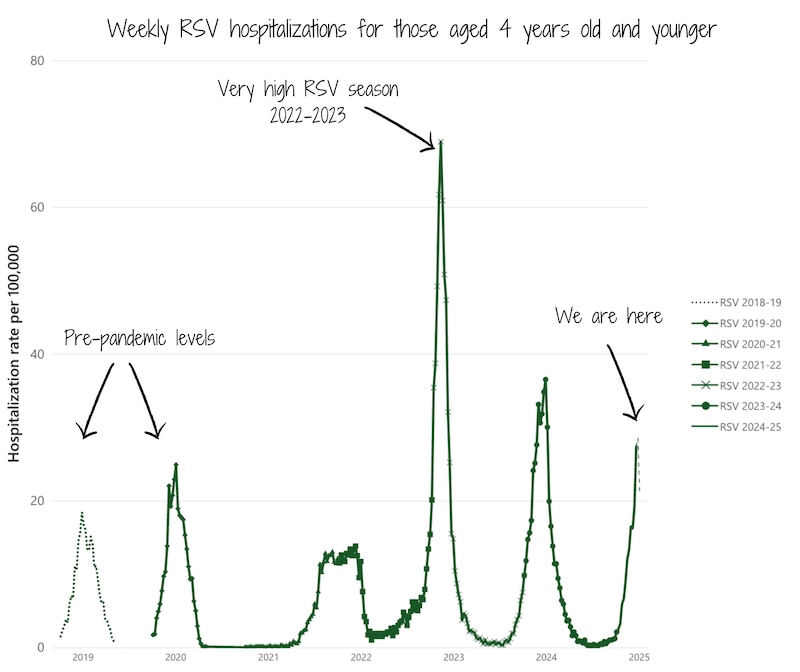
We still expect there to be several weeks of high RSV activity, so we aren’t out of the woods yet.
Norovirus: Surging, and you don’t want it
Norovirus cases are surging in New York City and many other parts of the United States. Norovirus is a highly contagious group of viruses responsible for gastrointestinal issues like vomiting and diarrhea. It’s the most common cause of the stomach “flu” or “bug,” causing 19 million-20 million cases in the United States annually. In New York City, there were about 1,300 cases in December — almost triple the number during the same time in 2023 (488 cases).
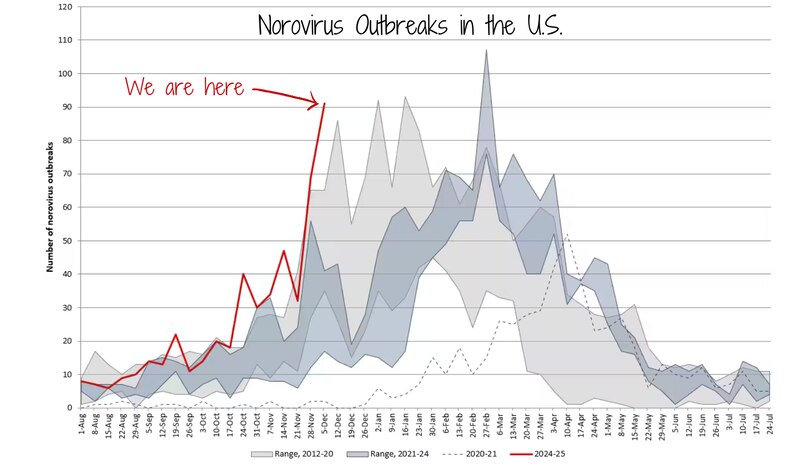
Norovirus is spread through contact with infected people, contaminated surfaces, and food. It’s notoriously infectious. While infected with norovirus, people shed billions of virus particles, but it only takes a couple of particles to infect someone. Unfortunately, hand sanitizer doesn’t kill the virus because it has no outer membrane.
To prevent norovirus spread:
- Wash hands frequently with soap and warm or hot water for at least 20 seconds.
- Use detergents with bleach to clean and disinfect surfaces.
- To make your own, mix 1 teaspoon of bleach in 1 gallon of cool water.
- Any material handled by people infected with norovirus — linens, towels, dishware, utensils, doorknobs, and especially surfaces in the bathroom — should be cleaned well to prevent spread.
Most people should recover from norovirus on their own in 2-3 days.
Emerging diseases: Avian flu
Last week, news broke of the first avian flu (H5N1) death in the United States, a tragic reminder that this virus is dangerous and that we as a country need to be on alert. Thankfully, we still haven’t seen any person-to-person transmission, and only two of the 74 cases identified in the United States have had severe illness. (See this recent YLE post for more details.)
We haven’t had any known cases of avian flu in dairy herds or humans in New York, so the current risk to New Yorkers is low. However, we may be missing cases, given testing cattle is voluntary. Starting this month, though, we should have more visibility. New York is part of a national milk testing program led by the USDA and is one of 28 states testing milk for H5N1 in bulk raw milk (both milk that will be pasteurized and remain raw). I’ll be back with a deeper dive when we have more information.
Bottom line
Winter virus transmission is high right now. Stay healthy: Mask up, wash your hands, and bleach surfaces.
Love,
Your Local Epidemiologist
Dr. Marisa Donnelly, a senior epidemiologist with wastewater monitoring company Biobot Analytics, has worked in applied public health for over a decade, specializing in infectious diseases and emerging public health threats. She holds a PhD in epidemiology and has led multiple outbreak investigations, including at the California Department of Public Health and as an Epidemic Intelligence Service Officer at the Centers for Disease Control and Prevention. Marisa has conducted research in Peru, focusing on dengue and Zika viruses and the mosquitoes that spread them. She is Healthbeat’s contributing epidemiologist for New York in partnership with Your Local Epidemiologist, a Healthbeat supporter. She lives in New York City. Marisa can be reached at mdonnelly@healthbeat.org.

